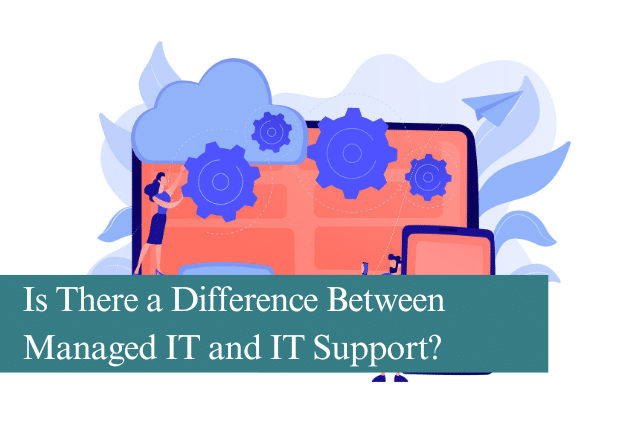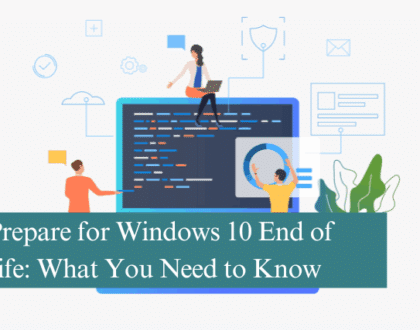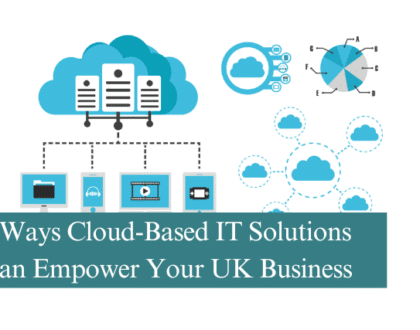
Businesses rely on technology to maintain productivity, security and communication. Whether you’re a small start-up or an established buisiness, you’ve likely encountered terms like “IT Support” and “Managed IT Services.” While they may sound similar, they serve different purposes and offer different levels of service. So, what exactly is the difference between the two, and which one is right for your business?
Understanding Traditional IT Support
IT support, sometimes referred to as “break/fix” support, is the more traditional model of technical assistance. It’s reactive in nature: when something breaks, you call the IT specialist to fix it. This could include:
- Troubleshooting hardware and software issues
- Restoring lost data
- Fixing network outages
- Repairing or replacing failed equipment
This type of support is often on-demand, meaning businesses only pay for the services when they need them. While this might seem cost-effective on the surface, it can actually become more expensive in the long run. When problems are not proactively addressed, downtime increases, which in turn can lead to loss of productivity and revenue.
What Is Managed IT Services?
Managed IT services, on the other hand, take a proactive and comprehensive approach to handling your business’s technology needs. Rather than waiting for issues to occur, a Managed IT provider continuously monitors your systems, anticipates problems and implements solutions before disruptions happen.
Key features of managed IT services include:
- 24/7 monitoring of networks and systems
- Regular data backups and disaster recovery planning
- Cybersecurity management and threat prevention
- Software updates and patch management
- Strategic IT planning and consultancy
In essence, you’re partnering with a dedicated team that acts as your external IT department helping you plan, scale and secure your infrastructure as your business grows.
Core Differences Between IT Support and Managed IT
| Feature | Traditional IT Support | Managed IT Services |
|---|---|---|
| Approach | Reactive | Proactive |
| Billing | Per incident/hour | Monthly subscription |
| Monitoring | Limited or none | 24/7 monitoring |
| Strategy & Planning | Typically absent | Included |
| Cybersecurity | Basic support | Integrated security tools |
| Business Continuity | Ad hoc recovery | Structured backup plans |
One of the biggest differences is the level of involvement. IT support focuses on solving immediate problems. Managed IT focuses on preventing them altogether, while also aligning your technology strategy with your business goals.
Why Managed IT Services Are Becoming Essential
Technology is evolving rapidly and so are the threats that come with it. With cyber attacks on the rise and compliance regulations becoming stricter, businesses can’t afford to be complacent. Managed IT services offer peace of mind by ensuring your systems are secure, up to date, and functioning optimally around the clock.
Moreover, by partnering with a managed IT provider, you gain access to a team of experts without the overhead costs of hiring in-house. This is particularly beneficial for small and medium-sized businesses that need enterprise-level support on a budget.
When Is IT Support Still Useful?
That said, there are scenarios where traditional IT support may still have its place. For very small businesses or sole traders with minimal tech requirements, ad hoc support might suffice. It’s also useful for short-term projects, equipment installations, or one-off consultancy.
However, as soon as your business begins to rely on multiple systems, cloud applications, or sensitive data, it’s time to consider a managed approach.
Which One Is Right for Your Business?
Choosing between IT support and managed IT comes down to your business needs, budget and long-term strategy. If your current IT setup is causing frequent issues or downtime, and you find yourself constantly reacting to problems, managed IT could be the more sustainable solution.
Managed services not only reduce the likelihood of technical issues but also help you plan for growth, reduce operational risks and remain compliant with industry regulations.
Conclusion
While both IT support and managed IT services aim to help businesses navigate the challenges of modern technology, their approaches are different. IT support fixes problems when they arise; managed IT prevents them from happening in the first place.
If you want a more secure, reliable and scalable IT environment, managed services are the way forward.
Need Help Managing Your IT?
Whether you’re looking to reduce downtime, boost cybersecurity or simply want a more strategic approach to IT, we’re here to help. Based in Bradford, our team provides reliable and cost-effective Managed IT Support tailored to your business needs.
Contact us today to learn how we can transform your technology from a burden into a competitive advantage.
Recommended Posts

Moving Past Passwords: Effective Authentication Methods
25th July 2025

Prepare for Windows 10 End of Life: What You Need to Know
18th July 2025

5 Ways Cloud-Based IT Solutions Can Empower Your UK Business
12th July 2025
